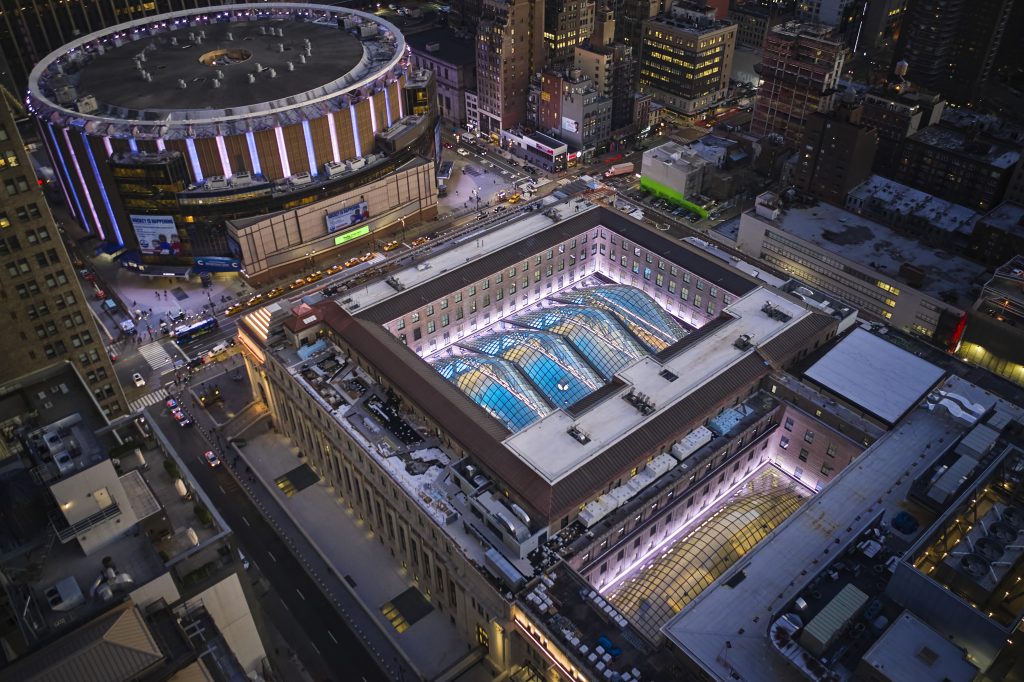A History of Awards
March 25, 2022The film awards season comes to a close this weekend with the airing of the 94th Academy Awards ceremony on Sunday. Movie stars, directors, and producers will arrive by limo at the Dolby Theater in Hollywood, California, where they will walk the red carpet and proceed inside and wait, with bated breath, to learn who will be named best actor and actress and which film will be crowned as the year’s best.
The structural engineering professional also has an awards season, and while it might not be as well-known or quite so glamorous as the film industry’s, it shares the goal of recognizing the aesthetic and technical merits of its projects and the skill and dedication of the people and organizations who produce them. Severud Associates has a long history of receiving structural engineering awards, even if none of its engineers has yet walked a red carpet.
One of the earliest accolades came in 1952. That year, the Franklin Institute in Philadelphia, Pennsylvania, awarded its Frank P. Brown Medal to Fred N. Severud for his significant contributions to the fields of engineering and building construction. The award put him in the distinguished company of other notable engineers such as Albert Kahn, Karl Terzaghi, and Eugene Freyssinet; Frank Lloyd Wright received the award the following year.
Also in 1953, the American Institute of Architects (AIA) bestowed first honors to the J.S. Dorton Arena, originally known as the North Carolina State Fair Arena and used for the judging of livestock. The structure, consisting of two inclined, intersecting concrete arches supporting a grid of pretensioned cables, was the first permanent cable roof in the world. The building was added to the National Register of Historic Places in 1973 and designated a Historical Civil Engineering Landmark by the American Society of Civil Engineers (ASCE) in 2002.
In 1964, ASCE designated Fred Severud the winner of their Ernest E. Howard Award for the Advancement of Structural Engineering. By this time, he and his colleagues had engineered innovative structural systems for the Charlotte Auditorium in North Carolina, the Seagram Building in New York City, the David S. Ingalls Rink at Yale University in New Haven, CT, and the National Astronomy and Ionosphere Center in Arecibo, Puerto Rico and the firm was completing the structural design of the Gateway Arch at the Jefferson National Expansion Memorial in St. Louis, MO.
Severud’s work on the Arch—dating back to 1947—resulted in a weighted catenary shape that allows the structure to carry most of its gravity loads in pure compression with no significant lateral thrust at its foundation. The arch’s triangular section is formed with a stressed orthotropic skin composed of two layers of steel separated by a gap, which is filled with post-tensioned concrete for the lower third of its height. These and other innovations led to several honors, including a Special Award for Excellence from the American Institute of Steel Construction (AISC) and an Outstanding Civil Engineering Achievement Award from ASCE, both in 1967.
Severud Associates continues to provide structural engineering worthy of awards recognition. Most recently, the firm received multiple honors for Moynihan Train Hall, the redevelopment of the James A. Farley Building for transportation, retail, and office use and One Vanderbilt Avenue, a high-rise office building adjacent to Grand Central Terminal, both in Manhattan. Together, these projects have received engineering awards from ASCE, AISC, the American Council of Engineering Companies, and the Structural Engineers Association of New York, as well as design awards from AIA, ENR, and the New York Landmarks Conservancy, to name just a few.
Photo by Lucas Blair Simpson & Aaron Fedor © Empire State Development | SOM
